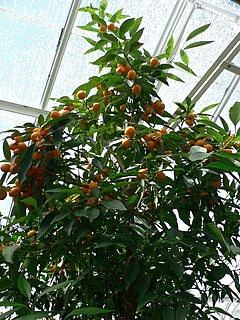
Zosteraceae is a family of marine perennial flowering plants found in temperate and subtropical coastal waters, with the highest diversity located around Korea and Japan. Most seagrasses complete their entire life cycle under water, having filamentous pollen especially adapted to dispersion in an aquatic environment and ribbon-like leaves that lack stomata. Seagrasses are herbaceous and have prominent creeping rhizomes. A distinctive characteristic of the family is the presence of characteristic retinacules, which are present in all species except members of Zostera subgenus Zostera.

August Carl Joseph Corda (1809–1849) was a Czech physician and mycologist. This botanist is denoted by the author abbreviation Corda when citing a botanical name.

Olof Peter Swartz was a Swedish botanist and taxonomist. He is best known for his taxonomic work and studies into pteridophytes.

Brongniartella is a genus of red alga, named after French naturalist Adolphe Brongniart.
Charles Baron Clarke was a British botanist. He was born at Andover, the eldest son of Turner Poulter Clarke. He was educated at King's College School, London, and at Trinity and Queens' Colleges, Cambridge. He began the study of law at Lincoln's Inn in 1856 and was called to the bar in 1860. He lectured in mathematics at Presidency College, Calcutta, from 1857 to 1865. Clarke was Inspector of Schools in Eastern Bengal and later of India, and superintendent of the Calcutta Botanical Garden from 1869 to 1871. He retired from the Indian Civil Service in 1887. He was president of the Linnean Society from 1894 to 1896, and was elected a fellow of the Royal Society in 1882. He worked at Royal Botanic Gardens Kew until his death in 1906.

Afrofittonia commonly known as the hunter's weed, is a genus of plants in the family Acanthaceae. There is only one species in the genus, Afrofittonia silvestris. It is found in Cameroon, Equatorial Guinea, and Nigeria. Its natural habitat is subtropical or tropical moist lowland forests. It is threatened by habitat loss due to Oil & gas drilling.

Cunninghamella is a genus of fungi in the order Mucorales, and the family Cunninghamellaceae. The genus was circumscribed by French mycologist Alphonse Louis Paul Matruchot in Ann. Mycol. Vol.1 on page 47 in 1903.
Duboscquella is a genus of dinoflagellates.

Eisenia is a brown alga genus in the family Lessoniaceae. The genus is named for California Academy of Sciences curator, Gustav Eisen.
Cunninghammyces is a genus of corticioid fungi in the family Cyphellaceae. The genus, described by Joost Stalpers in 1985, contains two species known from New Zealand and Réunion.

Clymenia is a small genus of flowering plants in the family Rutaceae with two species. The genus is often included in Citrus.
Johannesbaptistia is a genus of brackish–freshwater cyanobacteria which has a very characteristic morphology. It is the only member of the family Cyanothrichaceae. When the name was changed from Cyanothrix to Johannesbaptistia, the family name was not changed.
Borzia is a genus of cyanobacteria.

Whitfordiodendron is a genus of flowering plants in the legume family, of Fabaceae. It belongs to the subfamily Faboideae.
Maurice-Augustin Gomont was a French phycologist.
Benjaminiella is a genus of fungi belonging to the family Mucoraceae.








